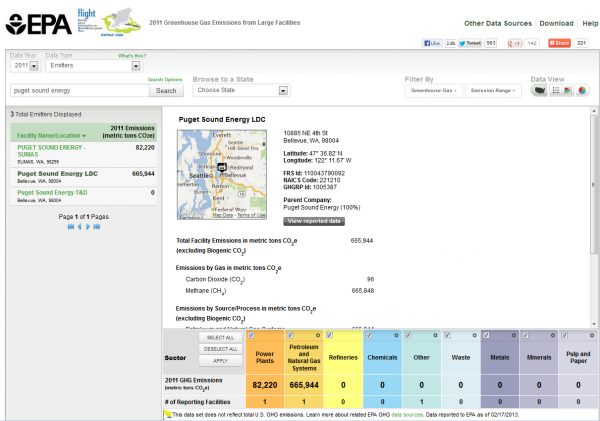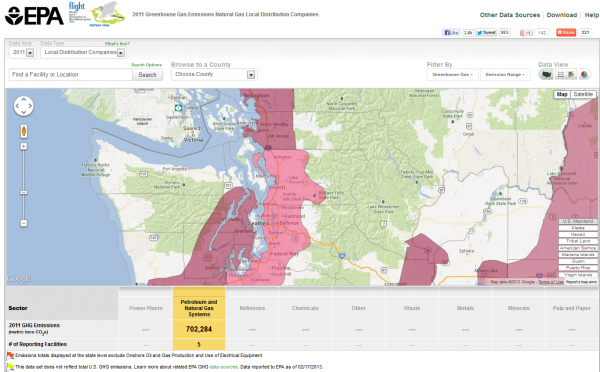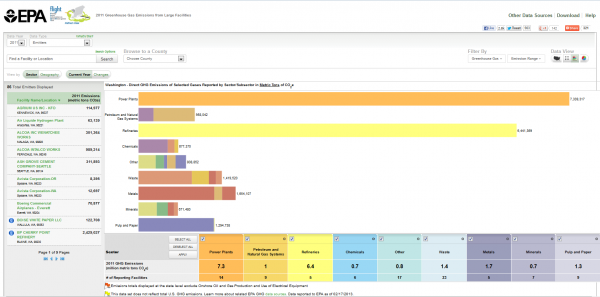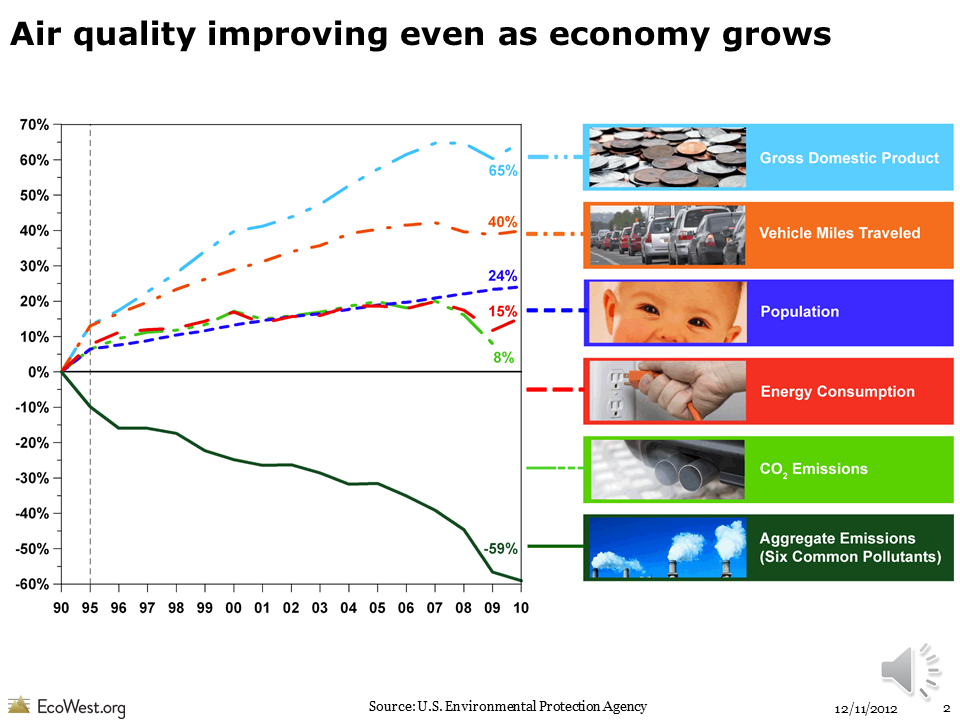If you’re curious about the industrial operations that are emitting greenhouse gases (GHG) in your state or neighborhood, the U.S. Environmental Protection Agency (EPA) has a great data tool that also provides some helpful context with its visualizations.
Data is only available for 2011, but EPA’s tool provides a wealth of information for interested citizens and environmental experts alike. The tool only reports on facilities that emit more than 25,000 metric tons of GHGs a year, but these major emitters, such as power plants and refineries, account for more than half of the nation’s total GHG output.
The maps, which can be analyzed by state and county, show the location of GHG emitters; suppliers of fossil fuels and industrial chemicals; onshore gas production facilities; local energy distribution companies; and the handful of facilities that inject CO2 underground. The maps will tell you how many facilities are in a given location and, if you keep zooming in, you get to facility-level data. For example, in Washington you can click on facilities in Bellevue and get to Puget Sound Energy, as shown below.
If you click on “View reported data,” you’ll be sent to another EPA database page that provides greater detail.
Aside from just clicking through points on the map, you can search for facilities by name or location. You can also filter data by type of GHG, or by the quantity of emissions.
Where the data tool really comes to life is in the mapping of coverage areas for local energy companies. Still using Puget Sound Energy as our example, the mapped data shifts from the point source facility to the region served by the utility.
Below the map, EPA provides some context for the sector you are viewing, in this case petroleum and natural gas systems in the state. Washington has five such facilities that reported 702,285 metric tons of CO2-equivalent in 2011. At 665,994 metric tons, Puget Sound Energy is responsible for the vast majority of emissions associated with the state’s energy supply.
You can easily get a snapshot of statewide GHG emissions by playing with the “Data View” buttons on the top right of the GHG tool web page. In Washington, power plants and refineries account for the bulk of reported GHG emissions. Clicking on the pie chart instead of the bar chart displace the same data in more intuitive percentages.
To learn more about state-level GHG data, see our other posts: “Greenhouse gases: how do Western states compare?” and “Flow diagrams of U.S. and Western carbon emissions.”
EcoWest’s mission is to analyze, visualize, and share data on environmental trends in the North American West. Please subscribe to our RSS feed, opt-in for email updates, follow us on Twitter, or like us on Facebook.





